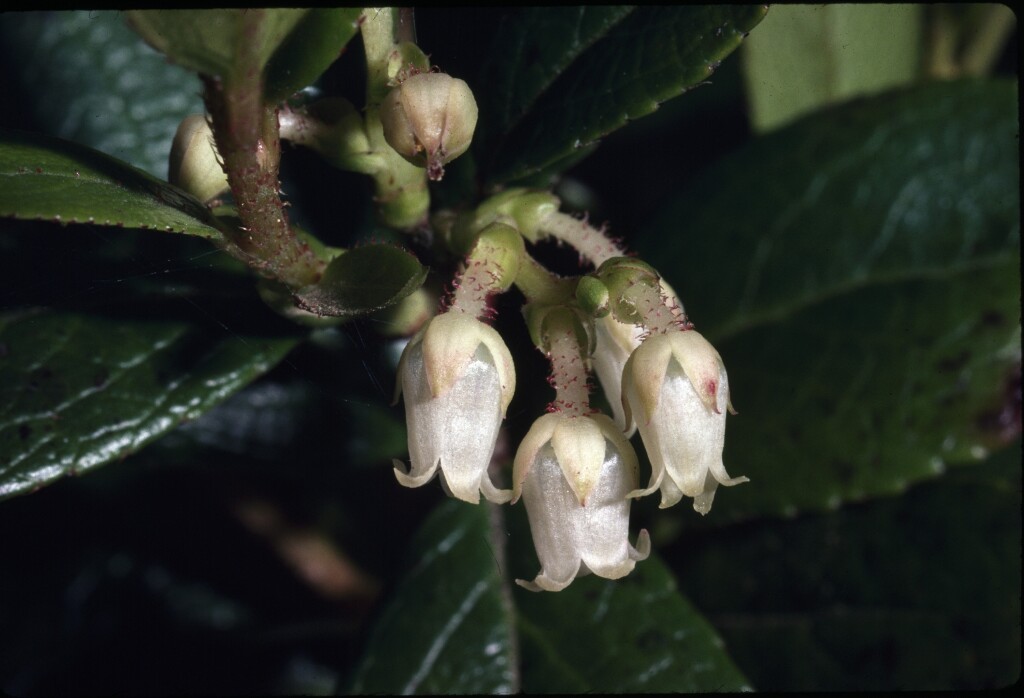Gaultheria appressa
A.W.Hill Wax-berryErect or spreading shrub to c. 1.6 m high. Young stems with coarse, appressed or semi-appressed hairs, often overlaying very short, fine, curled hairs. Leaves elliptic to ovate-lanceolate, 3–9 cm long, 12–25 mm wide, upper surface glossy dark green, glabrous with impressed venation, lower surface paler with scattered coarse appressed to spreading hairs on the major veins; margins shallowly and evenly serrate. Flowers rather crowded in racemes to c. 4 cm long; bracts broad-ovate, 2–3 mm long, fimbriate; bracteoles resembling bracts; sepals ovate, acute, 2.5–3.5 mm long at anthesis, shortly united at base; corolla urceolate, 4–5 mm long, with bluntish recurved lobes c. 1.5 mm long, white to pale pink. Fruiting sepals 6–8 mm long or more, fleshy and largely fused, forming a berry-like structure 8–10 mm diam., enclosing the dry capsule c. 4 mm diam.; seeds numerous, irregularly shaped, c. 0.7 mm long, pale brown. Flowers Nov.–Dec.
Gold, NIS, EGU, HSF, HNF, MonT, HFE, VAlp. Also NSW. Scattered but locally common in tall, well-watered forests, subalpine scrubs and woodlands of the eastern ranges from about Healesville to the New South Wales border, often in rocky terrain and on road cuttings etc.
Walsh, N.G. (1996). Ericaceae. In: Walsh, N.G.; Entwisle, T.J., Flora of Victoria Vol. 3, Dicotyledons Winteraceae to Myrtaceae, pp. 509–514. Inkata Press, Melbourne.
 Spinning
Spinning
